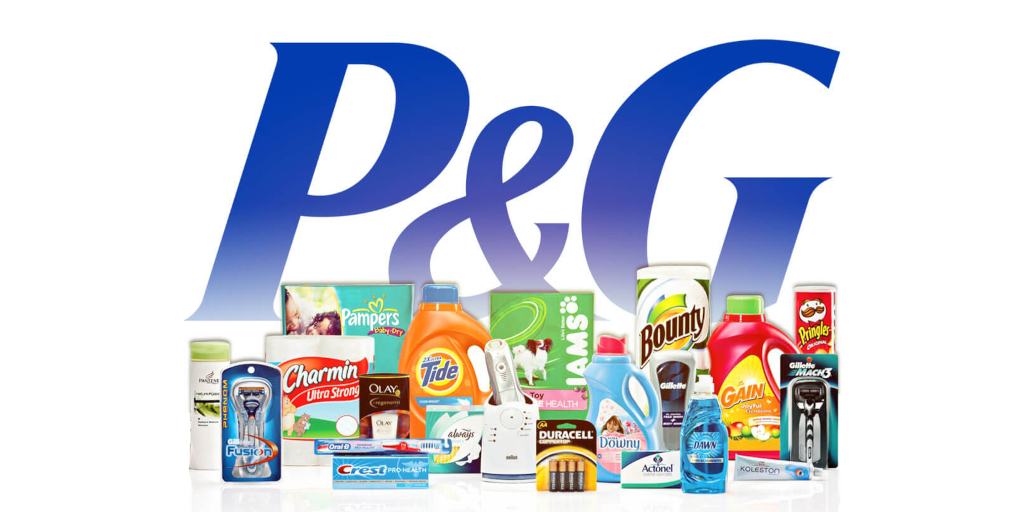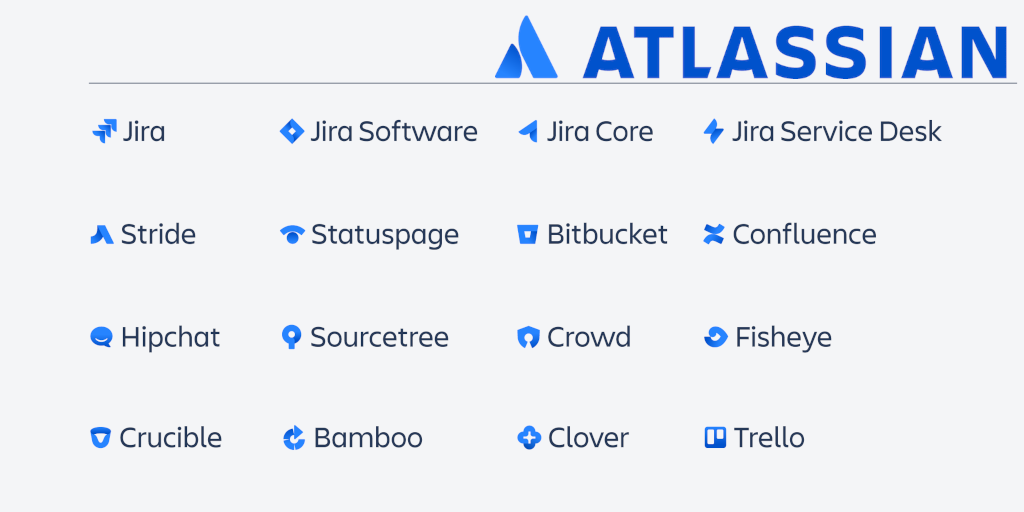
The other day, my household experienced one of the great tragedies of the home delivery era: our grocery delivery was canceled.
You know what that means. I had to go to the grocery store. Like, physically, in person, go inside the grocery store.
I survived, but phew. Let’s just say there were a few close calls.
All in all, though, it was a successful trip. I picked up a couple of prescriptions, had an eye exam, switched the pet insurance, got some advice about first-time homeownership, and even remembered to get dinner fixins. I would’ve gotten my oil changed and tires rotated, too, but I don’t have a car so… Yeah. I didn’t do that.
This is what economies of scope look like. Economies of scope are when it’s more cost-effective to produce related items together than it is to produce them individually. In the 21st century economy, it’s also an increasingly familiar model as brands continue to expand their offerings to consumers.
As a consumer, this model is great. We don’t have to run around all over the place to take care of all our responsibilities. For companies, it’s not a bad model, either.
Economies of scope – offering all of these services under one roof – companies are actually spending less by offering more.
But wait – how does that work?
Well, I’ll tell you:
- What do we mean by economies of scope?
- Economies of scope: Pros and cons
- Economies of scope vs economies of scale
- Economies of scope in action
- If all your friends jumped off a bridge…
Welcome to Process Street! Right this way, please.
What do we mean by economies of scope?
An economy of scope is an economic factor that makes manufacturing multiple products together more cost-effective than manufacturing them individually.
The easiest way to grasp this is to think of industries like car manufacturing or computers. A company that produces computers will make several different models, and probably have an additional product line of tablets, phones, and other electronic devices.
Since these products are manufactured in similar ways, it’s cheaper for the company to produce them all in one facility rather than have separate locations for each product.
There are three primary classifications of economies of scope:
- Co-products:
Co-products are created when a byproduct of the production process can be used independently, both reducing waste and increasing revenues. - Complementary production processes:
This results from the direct interaction of two or more production processes. The final products may not appear to directly relate to each other, but producing them together is more cost-effective than producing them separately. - Shared inputs:
Shared inputs take advantage of the fact that many inputs (resources) have multiple uses. A company with a team of graphic designers producing images for multiple products is a good example of this. The cost per unit is lower with one team working on many things than it would be with many teams each working on one thing.
There are a few different ways that companies can achieve each of these:
- Diversification through products with similar inputs or production processes;
- Merging or acquiring another company;
- New uses for production byproducts;
- Two or more producers partnering with each other to share factors of production.
Economies of scope: Pros and cons
Economies of scope seem like a great deal, right? If you can make more by doing less, why not?
And it’s true – economies of scope provide companies with several advantages.
Companies are better able to adapt to changing consumer tastes and market trends. Kodak, for example, made the mistake of not jumping on the digital bandwagon with their cameras. As a result, they became bankrupt in 2013 because demand wanted digital and Kodak had nothing to offer.
Even though the company is once again profitable, and technically still exists, they no longer produce equipment and barely get a respectful nod from the industry they once dominated.
Another advantage is the ability to offer regional and international variations of popular products to accommodate different tastes and expectations. A McDonald’s breakfast in Atlanta will get you a sausage biscuit while one in Manchester offers a breakfast roll.
Or maybe you’d rather have a royale with cheese.

It’s essential to keep in mind that there are some risks attached to economies of scope.
To be blunt: just because you can doesn’t mean you should.
A company expanding into a new area may not have the specialized knowledge required to maintain that product. In addition to the danger of overextending product lines, this can result in damage to the brand name as a whole.
Economies of scope vs economies of scale
While economies of scope are concerned with increasing the variety of products, economies of scale increase the product volume to reduce the average cost per unit.
Generally speaking, economies of scale are a natural aspect of the expansion process. As a manufacturer gets larger, the relative operating and capital costs decline (a machine that produces twice the output doesn’t cost twice as much to operate).
The assembly line – the great symbol of mass production – is an essential component in supporting economies of scale. The assembly line was adopted because it allowed fewer workers to create more products in less time.
Henry Ford’s first assembly line reduced the time it took to build a car from 12 hours to 1 hour and 33 minutes – a 66% increase in productivity.

In addition to productivity, mass production has another significant benefit: specialization.
In small organizations, individuals are generally required to wear many hats and perform several different types of tasks. Many people enjoy work environments like this, but it comes at a cost: by performing multiple functions, it’s more difficult to become highly skilled at any of them.
It comes down to the old question: is it better to know a lot about a little, or a little about a lot?
In economies of scale, knowing a lot about a little is much more of an advantage. As a person becomes more experienced and knowledgeable about a particular area, their output becomes faster, higher quality, and more efficient.
To use the example of economist Adam Smith:
In a pin factory, the pin-making process is broken down into 18 distinct steps: straightening the wire, cutting it, sharpening it, and so on. Even in smaller factories, one worker will perform at most two or three of these steps.
As a result of this level of specialization, ten workers are able to produce about 48,000 pins per day (or 4,800 per worker). By contrast, a single unskilled worker completing every step themselves would struggle to produce even 20 pins per day.

Economies of scale and economies of scope do have some overlap (economic use of byproducts, for example), and they are often interdependent.
The key difference, though, is that the benefits of scope aren’t necessarily related to the size of a manufacturer’s output. Economies of scope solely relate to lower cost as a direct result of producing multiple products.
Economies of scope in action
Economies of scope can work in just about any industry, but some are naturally more inclined. Retail, for example, is primed for achieving economies of scope.
Let’s look at a few companies that have benefited from economies of scope.
Amazon

I’m old enough to remember when Amazon was just an online bookseller. And not a very good one at that; I could never find the books I wanted. Maybe I just like unpopular books, because in the span of one year the company’s revenue jumped from $500,000 to $16 million.
Now I don’t know about you, but at this point, Amazon is so ingrained in my life that it doesn’t even occur to me to shop somewhere else when I need something.
Obviously, Amazon has experienced a tremendous amount of scale over the past twenty-some years, but they accomplished this by increasing their scope.
Branching out from selling books online to CDs, and then toys and electronics to, eventually, anything you could possibly want is not as huge a leap as it seems.
As a completely digital business, Amazon only had to worry about stock, storage, and shipping. When they wanted to diversify, the sales infrastructure was already there. They also didn’t have to worry about renovating a brick-and-mortar store; all they needed was a bigger warehouse.
By the fourth quarter of 2020, Amazon registered over $125 billion in revenue, accounts for nearly 50% of retail ecommerce sales in the US, and is increasingly giving Netflix a run for its money as a top streaming platform.
Not too shabby for a bookseller who could only afford a cheap door for a desk when they started.
Proctor & Gamble

At this stage, it’d be less time-consuming to list the products Proctor and Gamble don’t sell. As of 2020, the company operated in nearly 200 countries, earned $65 billion in net sales, and held 37,000 patents. There’s a pretty good chance that if you use any sort of personal hygiene or cleaning products, you are among their $5 billion customers.
For a candlemaker and a soapmaker, that’s not a bad legacy.
P&G managed this expansion through various acquisitions over the years, beginning with Thomas Hedley, Co. in 1930. By 1957, P&G were in the business of laundry detergent, shampoo, toothpaste, and tissue paper products.
Producing these additional products made sense in terms of increasing the company’s scope. The materials, processes, and branding used can be applied to several different products. For example, the Gillette brand covers a wide range of razors, shaving cream, and personal grooming products for both men and women.
But Gillette isn’t the only razor brand P&G owns. Braun (specializing in electric razors) and Venus (primarily women’s razors) are both subsidiaries of the company, many of the same operations (manufacturing blades, market research, design labor, and targeted campaigns) can be reused across all three brands, reducing the overall cost for each.
Starbucks

Starbucks is perhaps the most ubiquitous brand when it comes to coffee. In the early days, Starbucks was all about producing top-rate coffee that satisfied the palette of the most discerning coffee connoisseurs.
In the ’80s, Starbucks’ head of marketing, Howard Schultz, bridged the gap between first-time customers and the intricacies of fine coffees with informational brochures and eager-to-help baristas, making it that much easier for the average person to confidently order their almond milk-no-foam-caramel-macchiato.
Flash forward a few decades, and you not only have the luxury of making Starbucks coffee in your drip coffeemaker, but the company also produces coffee pods and – scandalously – instant coffee.
And why not? For a company already producing a variety of coffees hand over fist, packaging it a little differently was certainly not a huge stretch on their resources. With the already established quality of the Starbucks brand, even the snobbiest of coffee drinkers would be tempted to check out the instant version of their favorite brew.
Atlassian

Atlassian’s humble start came in 2002 with the launch of Jira 1.0, a simple issue tracking and project management app. Two years later, Confluence came onto the scene.
The reasoning behind that was just as simple: Jira provided teams with an effective and efficient way to collaborate. Confluence added the ability to organize all of the content created during that collaboration in one central app.
Atlassian created one product, realized their market had an additional need, and decided they could produce another product to meet that need.
In a little over 15 years, the company has expanded to offices in 7 countries, 4,000+ apps in their marketplace, and they’ve even been to Mars.
Spotting examples of economies of scope in software and SaaS can be tricky. The nature of software means that it has a certain fluidity compared to more physically-bound products like laundry detergent and coffee beans. An engineer may add a new feature that opens up functionality to a whole new market. Over time, that feature may even turn into a product of its own, or, like Atlassian, that engineer might decide to go ahead and create something specifically to address a need they’ve identified.
Atlassian, though, is a good example of how software and SaaS companies can embrace the concept of economies of scope and accomplish some pretty stellar results.
If all your friends jumped off a bridge…
As you can see, the methods and reasons for pursuing economies of scope can vary greatly. In all of the examples mentioned, economies of scale go hand-in-hand with the company’s scope expansion, but this doesn’t mean it’s always the case.
COVID-19 has prompted many restaurants and businesses that previously didn’t offer delivery or click-and-collect services to branch out in order to compensate for the absence of in-person revenue streams. This is a perfect example of how a business can utilize an economy of scope without necessarily scaling their business.

Instead, this economy of scope was created due to an abrupt shift in the market that required businesses to either adapt or close their doors. While some businesses have committed wholeheartedly to maintaining this change long-term, others are eagerly looking forward to a return to normal.
And still others – as is the case with UK clothing store Primark – have refused to make the leap, despite billions in losses and much pressure from their customer base. Primark has said the cost of adding an online store is prohibitive in terms of profit margins, but the will-they/won’t-they debate has prompted many to ask whether the solely brick-and-mortar operation still serves a role for the modern consumer.
Achieving economies of scope – or scale, for that matter – is not a surefire bet. Like Primark, you need to weigh the cost versus return of diversifying your brand. Both choosing to diversify – and choosing not to – have the potential to alienate your existing customers, or irrevocably damage the brand persona you’ve built up.
In the end, the best course for deciding whether or not to pursue an economy of scope is to proceed with caution, and look before you leap.
What do you think about Primark’s decision to stay offline? Has a company reached high and fallen short? Share your thoughts on economies of scope in the comments!







Leks Drakos
Leks Drakos, Ph.D. is a rogue academic with a PhD from the University of Kent (Paris and Canterbury). Research interests include HR, DEIA, contemporary culture, post-apocalyptica, and monster studies. Twitter: @leksikality [he/him]